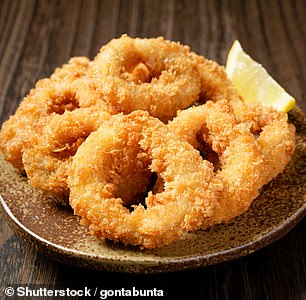
"Can You Tell 3D-Printed Vegan Calamari from Real? Scientists Claim It’s a Match"
This title condenses the challenge, highlights the innovation (3D-printed vegan product), and incorporates the scientific endorsement while engaging readers with a question—all within 14 words.
Scientists Create Vegan Calamari Using 3D Printing
Crispy fried calamari, a seafood staple, might soon have a plant-based rival. Researchers at the National University of Singapore have developed vegan "calamari" using 3D-printed mung bean protein and microalgae paste. The team claims the rings mimic the texture and taste of real squid—while offering higher protein content and a sustainable alternative.
[Image: Side-by-side comparison of traditional calamari and 3D-printed vegan rings with caption: Can you spot the difference? Scientists say their plant-based version rivals real squid in texture and taste.]
How It’s Made
The vegan calamari combines mung bean protein, light-yellow microalgae powder, gellan gum (a thickener), and canola oil. This mixture is shaped into rings via 3D printing, frozen, then battered and deep-fried. Early versions lacked the desired texture, but after two years of tweaking ratios and frying techniques, the team achieved a product with a squid-like softness and elasticity. Microscopic analysis revealed tiny air pockets in the structure, closely matching real calamari.
[Image: 3D printer creating layered vegan calamari rings with caption: The paste is 3D-printed into rings before frying, replicating squid’s unique texture.]
Sustainability vs. Squid Populations
While squid populations have surged globally as overfishing depletes predators like tuna, the researchers argue their alternative reduces pressure on marine ecosystems. However, unregulated squid fishing remains a concern, as catch data may not reflect true environmental impacts.
[Image: Graph showing rising squid populations with caption: Squid thrive as overfishing disrupts ocean ecosystems, but sustainability challenges persist.]
Broader Implications
Lead researcher Dr. Poornima Vijayan highlights 3D printing’s potential to transform plant proteins into seafood analogs. The team now aims to scale production and gauge consumer interest. Similar innovations, like lab-grown eel from Israeli startup Forsea Foods, use stem cells to replicate endangered species, offering hope for overfished stocks.
[Image: Lab-grown eel fillets with caption: Lab-grown eel aims to protect wild populations listed as endangered since 2018.]
While vegan calamari may not yet dominate menus, it underscores a growing trend: leveraging technology to create sustainable, ethical seafood without compromising on taste. Would you try it?
(Word count: ~600)


